Content is King, but engagement is Queen on social media platforms.
The more you engage your audience, the more each algorithm promotes and pushes you forward. This is exactly why interactive content works. In fact, interactive content sees 52.6% higher engagement than any static content on social media platforms.
While 79% of marketers favor interactive content, it is also important to understand the ROI of investing in these practices. Measure the performance of specific interactive content on platforms with the right techniques, advanced tools, and methods to strategize better.
Let’s put the spotlight on what works and set aside what doesn’t in social media marketing with the right tools - scroll down to take notes.
6 Best Practices for Analyzing Interactive Content Performance With Social Media Analytics Software
Interactive content on social media could include live streams on Instagram or LinkedIn, YouTube premiers, quizzes and questions on Instagram Stories, or even polls on X, LinkedIn, Facebook, and Instagram.
Even experimenting with these interactive features across all the platforms that support it can help create uniquely engaging campaigns. “Ask me anything” on Instagram stories, giveaway promotions on all platforms, and interactive quizzes are some great examples.
Measuring how well these different kinds of content performs tends to be complex. But it is possible. Let’s see how.
1. Using Advanced Metrics Beyond Basic Engagement
We’re used to using traditional metrics like likes, comments, and shares to track engagement. But to understand the effectiveness of interactive content, we have to look at advanced metrics to get more in-depth insights.
Dwell Time and Depth of Interaction
Basic engagement metrics don’t reflect how much time users have spent with your content. Most platforms can natively reflect the dwell time your content has generated. For example, Instagram tells you the “Watch Time” with each reel’s basic insights.
However, the native features only show insights per content. To get a deeper understanding of how your entire content is working, you need to use a social media analytics tool that will give you all this information cumulatively.
Understanding and analyzing dwell time is essential because it indicates whether your content has both captured and maintained the audience’s interest.
Let’s use my company, Hennessey Digital, as an example-–a digital marketing agency.
We need to understand and analyze dwell time to understand whether our content was able to capture and maintain our target audience’s interest. It’s typical for around a thousand people to watch our interactive post on Instagram Stories, but are most of them just viewing it passively and skipping? Or are they spending time with it and actually interacting with the post?
In addition to dwell time, interaction depth is another metric that can give additional insight into how much your audience has interacted with your content. For example, on LinkedIn Live, the number of comments, questions, and reactions a post gets can measure interaction depth. It’s a valuable metric that can show which parts of your interactive content are actually working.
Since there is no native tool to track all these metrics in one place, a social media analytics platform will do the trick for you. It can retrieve all the information, such as interactions and engagements, from all your live content and display them in one dashboard.
Heatmap Analysis
Heatmaps are a powerful way to understand which sections of your content are actually the most engaging. How? They show where users click, scroll, and hover on your content.
In the case of YouTube videos and Instagram stories, you can use tools to find out which interactive element got the audience to respond, which will help you optimize future content.
Click Rate
YouTube offers Click Rate analysis for the end screen and in-video cards you may add. So does Instagram, TikTok, Snapchat, and all other platforms.
This metric is so important to measure because it gives you the exact number of interactions you’re getting on your content. This way, you can tell if people are answering your polls, clicking on your event invites, and using your story links to reach your desired destination.
For example, when running an ad on the Instagram story, you can add a link to the content, and a tool will tell you how many people have actually clicked on it. When you know that number and compare it to the number of views on your story, you can now tell the click-through rate and see what changes you can make to your ad to make it more appealing to click on.
2. Using Sentiment Analysis for Contextual Understanding
Gianluca Ferrugia, the Managing Director of DesignRush says, “Who creates your content plays a critical role in the final reception on your social media platforms. If your agency specializes in local content, its content might not be received well in international circles online, and vice versa. Your content should be created with a contextual understanding of your audience.”
Other than the advanced metrics, understanding the emotional impact of your content matters.
A study by mention.com shows an upward trend in negative sentiment on Social Media over the years. So, you might be getting a significant number on dwell time and engagement, but it might be a negative response to your content. You want to steer clear of that, which is why it’s important that you analyze your content performance in the following ways as well:
Natural Language Processing (NLP): Social Media analytics tools can offer NLP analysis, wherein you can process comments or any textual interaction for positive, negative, or neutral sentiments. NLP also helps identify recurring themes or topics within your audience's feedback, which you can incorporate for future content improvements.
Sentiment Over Time: You can use social media analytics software to see and process any changes in language and perception of your brand over time. This way, you will know if your interactive content is just bringing in engagement or is actually doing something to improve your brand value and sales.
Influencer Marketing: Social Media marketing efforts can only be completed with influencer marketing campaigns. If you have an influencer on board, you can test how their presence affects your campaign. Analyze influencer accounts beforehand, and testing what that interaction brings to your brand matters.
3. Implementing A/B Testing with Interactive Content
A/B testing is the premise of analyzing content performance and improving it for the future. A/B testing, a type of creative testing, is the premise of analyzing content performance and improving it for the future.
Setting Up Effective A/B Tests
Tumble, a retail eCommerce company relies heavily on A/B testing to analyze how people respond to their content and explains how important it is to finding out exactly what makes their interactive more compelling.
“You’d be surprised what elements compel audiences to engage with your content. Sometimes it’s how we phrase our copy, or the main image that we use; it could even be as innocuous as the colors we went with. It’s insights like these that we don’t usually get if we didn’t run an A/B test and present multiple variations of our interactive content to our target audience,” Zach Dannett, Co-Founder & Co-CEO at Tumble says.
To set up a successful A/B testing campaign, Zach advises businesses to follow these steps:
Choose Variables: Select the elements you’ll put to test, such as the timing of Instagram Live sessions, the text in LinkedIn Polls, or the design of YouTube Cards. Ensure that you test only one variable at a time to isolate its impact.
Segment Your Audience: Segment your audience into two distant groups, both groups similar on a statistical basis. By doing this, you’ll ensure that the only qualifier for performance changes is your content, not the audience.
Timing and Frequency: Test different timings to find the right posting time. For instance, you might run an Instagram story poll in the morning for one group and in the evening for another.
Monitor Consistently: Use social media analytics tools to track and measure the performance of each variation. Sometimes, the control might perform better than the variation. See what changes made your post perform better, and you’ll have better results to work on in the future.
4. Cross-Platform Analysis for Comprehensive Insights
In 2024, there will be 5.17 billion Social Media users. However, all these users are not restricted to one specific platform. They are spread across multiple channels, which is why 73% of marketers promote multi-channel marketing.
However, with multiple channels and platforms at hand, you’ll also need to analyze your interactive content in a unified manner. Here’s how you can measure the cross-platform impact and insights for your content.
Unified Dashboard Tools: Social media analytics tools allow you to analyze the engagement, click rates, dwell time, and all other metrics for multiple platforms and content formats in one place. Therefore, if you post the same poll on multiple platforms, you will also be able to see the total response rather than the response from one platform only. Comprehensive social media tools that provide a unified dashboard and streamline analysis can ensure you maximize your reach and engagement across all channels.
Competitive Analysis technique: While performing cross-platform social media marketing, you’ll also need to know which platform is working well for you. The same poll might work well for you on one platform and might not for another, allowing you to see which platform needs more of your attention.
5. Advanced Audience Segmentation
Especially if you run an account with over 10,000+ followers, you’d want to check for fake followers. Some of them might be bots, and you don’t want to account for them in your performance report.
After you’ve found your true audience, you should segment your audience into multiple groups, as per statistical differences, and then analyze how the interactive content worked with each group.
For example, if you are posting at 1 pm Pacific Daylight Time (PDT), you will not get much engagement immediately from your audience living in Indian Standard Time (IST) and vice-versa.
Behavioral Segmentation: You might also want to segment your audience based on age and behavior. Some demographics are more likely to interact with content, while some aren’t. Therefore, you must measure their interaction metrics separately to find a true value and performance measure.
Content Consumption Goals: You must also segment your audience based on why each person is on social media to begin with. For example, if someone comes to Facebook only to shop, you will not see them interacting with Facebook lives, and vice-versa. A social media analytics software can help you understand this by segmenting the audience as per their interaction with your content, and you can group them accordingly. For example, suppose segment A mostly interacts with live events. In that case, they must be on the platform for networking or knowledge gathering, whereas someone only interacting with ads must be on the platform for shopping.
6. Predictive Analytics for Future Content Performance
Your interactive content performance analysis begins even before you start posting. It begins with historical data collected over time based on older campaigns run by other accounts on multiple platforms, which can be efficiently processed using ETL open source tools.
When you have already performed predictive analysis, you have a decent expectation of how the content is going to perform. Therefore, you can compare it with the actual results to have a clearer picture of how engaged your audience stays over time.
Predict Engagement: Through HypeAuditor’s engagement rate calculator, you can predict how many engagements you should expect from a pre-existing audience based on their previous interactions.
Budget allocation: HyperAuditor has several free tools, specifically money calculators, to help you understand how much money you can expect to make with Instagram, TikTok, and YouTube. Therefore, you can allocate a marketing budget accordingly to test how well interactive content is performing in specific budgets.
Quick Tip - Set Up Proper Tracking for Effective Data Collection and Tracking
Define Clear Objectives: Establish what you aim to measure and why. This will help you understand what exactly it is that you’re tracking, be it audience growth, lead generation, brand awareness, or authority building.
Leverage Platform Analytics: Utilize built-in analytics tools on platforms like Facebook Insights, Twitter Analytics, and Instagram Insights. You’ll find most of your answers there in the beginning. However, you should move on to more specialized tools once you clearly define your goals.
Tagging: Add UTM tags to your interactive content so that you can use social media analytics software to analyze each specific piece’s performance.
Event Tracking: Use event tracking in Google Analytics to monitor the status of interactive content, such as form submissions and quizzes.
Monitor Regularly: Regularly review and analyze your collected data to make informed decisions and adjustments.
Conclusion
Done well, these advanced tricks to analyze your interactive content performance can transform your social media marketing strategies. Make sure you’re not only relying on the basic metrics such as likes and shares. Also, focus on the comment section - what emotion are people showing? Look at the dwell time - are people even watching?
You always need to know where your audience is and meet them right there with your content. Therefore, this performance measure is the cornerstone of successful future campaigns.

















